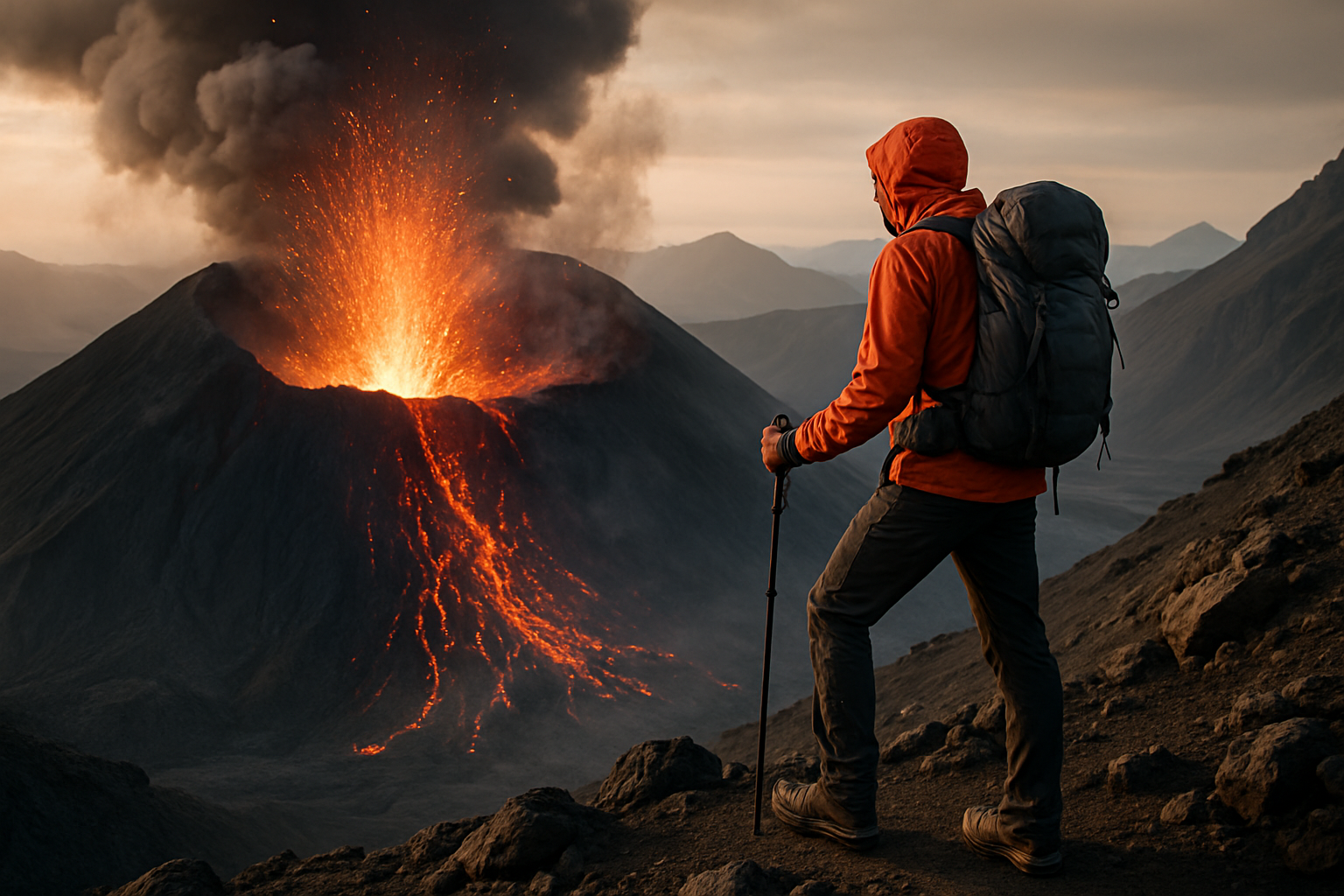Unraveling the Allure of Volcano Tourism: A Fiery Adventure
As adventure seekers and nature enthusiasts push the boundaries of travel, a thrilling trend has emerged from the depths of the Earth. Volcano tourism, once a niche pursuit, has erupted onto the global stage, captivating travelers with its promise of raw power and primordial beauty. This article delves into the world of volcanic adventures, exploring the science, safety measures, and unforgettable experiences that await those brave enough to venture near these geological wonders.

Understanding the Science Behind the Spectacle
To truly appreciate volcano tourism, it’s essential to grasp the basics of volcanology. Volcanoes are formed when magma from the Earth’s interior rises to the surface, creating a vent through which lava, ash, and gases can escape. There are three main types of volcanoes: shield volcanoes, stratovolcanoes, and cinder cones. Each type offers a unique landscape and eruption style, providing diverse experiences for volcano tourists.
Safety First: Navigating the Risks of Volcanic Adventures
While the allure of volcanoes is undeniable, it’s crucial to acknowledge and mitigate the inherent risks associated with volcano tourism. Tour operators and local authorities work tirelessly to ensure visitor safety through various measures, including real-time monitoring of volcanic activity, establishing safety zones, and implementing emergency evacuation plans. Travelers must adhere to all safety guidelines and regulations to ensure a safe and enjoyable experience.
Unforgettable Volcanic Experiences Around the Globe
From witnessing glowing lava flows to bathing in natural hot springs, volcano tourism offers a wide array of unforgettable experiences. In Hawaii, visitors can explore the otherworldly landscapes of Hawaii Volcanoes National Park, home to two of the world’s most active volcanoes. In Iceland, the land of fire and ice, travelers can marvel at geysers, hot springs, and the occasional eruption. Italy’s Mount Etna and Indonesia’s Mount Bromo offer their own unique volcanic adventures, complete with stunning vistas and cultural experiences.
The Environmental Impact and Sustainable Practices
As volcano tourism gains popularity, it’s crucial to consider its environmental impact. Increased foot traffic can lead to erosion and damage to delicate ecosystems. Many destinations are implementing sustainable tourism practices, such as limiting visitor numbers, establishing designated viewing areas, and educating tourists about conservation efforts. Responsible volcano tourism ensures that these natural wonders can be enjoyed by future generations.
Volcanic Ventures: Essential Tips and Fascinating Facts
• Always book tours with reputable, licensed operators who prioritize safety
• Pack appropriate gear, including sturdy hiking boots and protective eyewear
• Stay informed about current volcanic activity and follow all safety instructions
• Respect local customs and traditions when visiting volcanic sites
• The world’s largest active volcano is Mauna Loa in Hawaii, covering an area of 2,000 square miles
• Volcanoes are responsible for creating approximately 80% of the Earth’s surface
• Some volcanoes, like Yellowstone, are actually gigantic supervolcanoes capable of global impact
• Volcanic ash can be beneficial for agriculture, enriching soil with minerals
Volcano tourism offers a unique opportunity to witness the raw power of nature and gain a deeper appreciation for our planet’s geological processes. As this trend continues to grow, it’s essential for travelers to approach these experiences with respect, caution, and a commitment to sustainability. By doing so, we can ensure that the awe-inspiring beauty of volcanoes remains accessible for generations to come, while fostering a greater understanding of the dynamic forces that shape our world.





